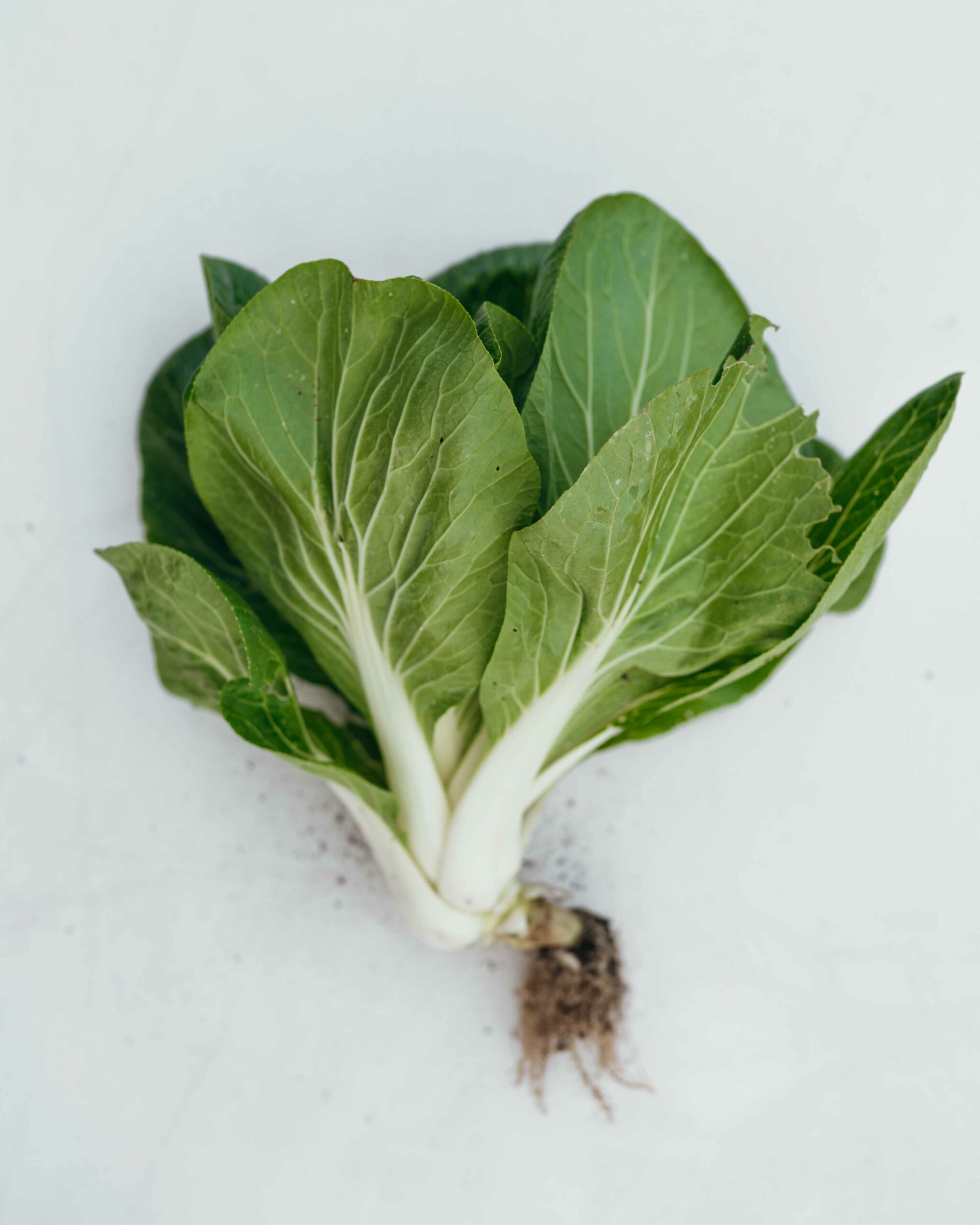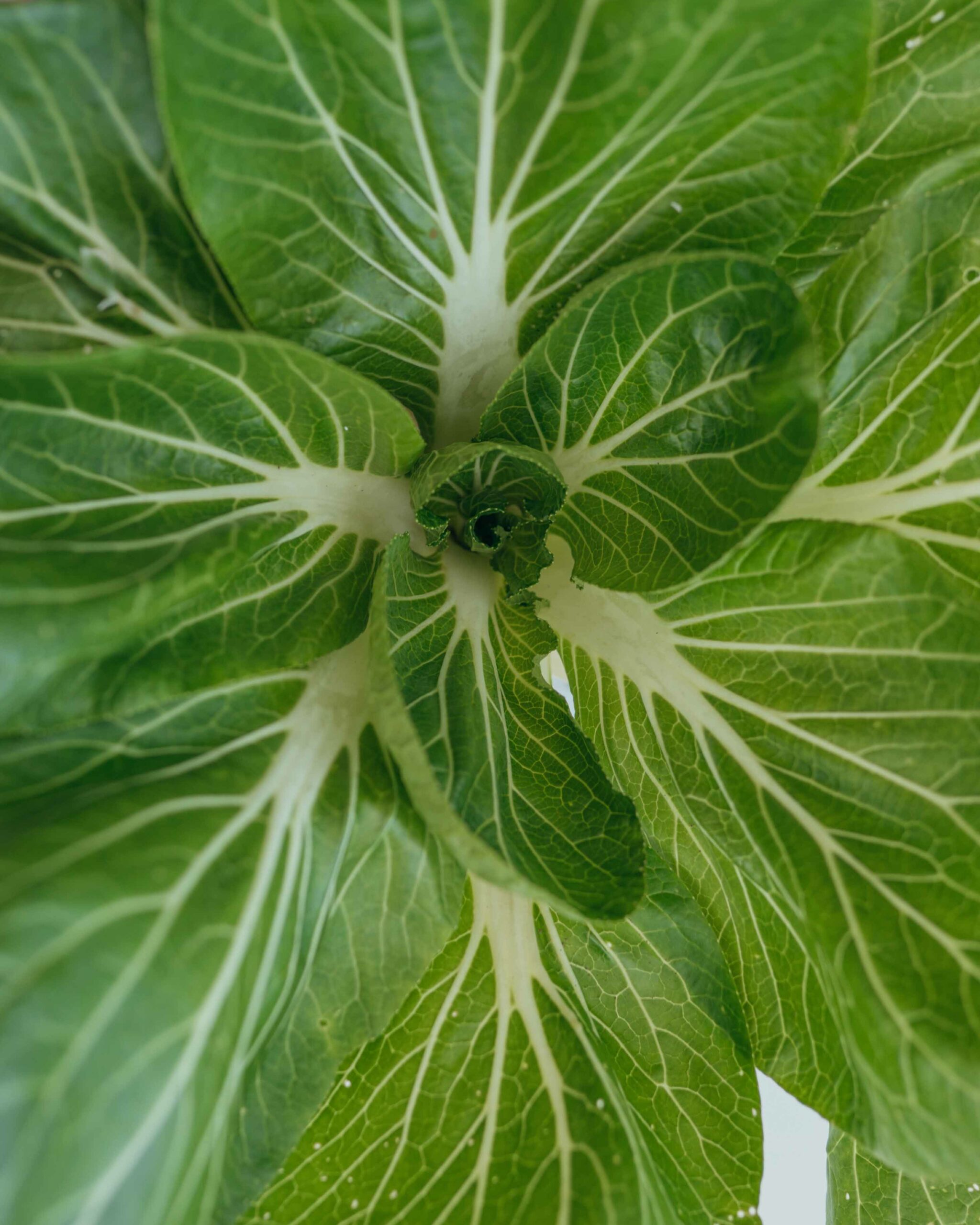Brassica rapa subsp. chinensis
Pak Choi
Englische Bezeichnung: Pak Choi
Spanische Bezeichnung: Pak Choi
Familie
Kreuzblütengewächse (Brassicaceae)
Hauptbestandteile:
Mineralstoffe: Calcium, Magnesium, Kalium
Vitamine: B-Vitamine, C, Folsäure, Beta-Carotin (Provitamin A)
Sekundäre Pflanzenstoffe: Antioxidantien, Flavonoide, Phenolsäure, krebsfeindliche Senfölglycoside
Ernte-Hinweise:
Einzelne Blätter können während der gesamten Wachstumszeit geerntet werden. Mit zunehmendem Alter verändern sich Geschmack und Konsistenz, sodass die Milde verloren geht.
Verwendung:
Rohkost, Dünsten, Blanchieren, Braten
-
z.B.: als Gemüsebeilage in Aufläufen, Eintöpfen, Curry
Wie sein deutscher Zweitname Chinesischer Senfkohl bereits vermuten lässt, stammt Pak Choi aus Asien. In China, Korea und Japan kennt man das botanisch eng mit dem Chinakohl verwandte Gemüse schon lange.
Family
Cruciferous Vegetables (Brassicaceae)
Parts Used:
Leaves
Key Constituents:
-
Minerals: Calcium, magnesium, potassium
-
Vitamins: B vitamins, C, folic acid, Beta-Carotene (Provitamin A)
-
Secundary plant substances: antioxidants, flavonoids, phenolic acid as well as anti-cancer sulfur-containing glucosinolate compounds, isothiocyanates and sulforaphane
Harvesting Guidelines:
If the lower leaves are harvested, the kale will regrow from the center and the harvest will be more abundant.
Use:
raw veg, steaming, blanching, roasting
e.g.: as a vegetable garnish in casseroles, stews, curry
As its German second name, Chinese mustard cabbage, suggests, pak choi originates from Asia. In China, Korea and Japan, the vegetable, which is botanically closely related to Chinese cabbage, has been known for a long time.
Familia
Planta Crucífera
Partes aprovechables:
Hojas
Principales Constituyentes:
-
Minerales: calcio, magnesio, potasio
-
Vitaminas: Vitaminas B y C, beta-carotina (Provitamina A), Ácido fólico
-
Sustancias vegetales secundarias: Antioxidantes, Flavonoides, ácido fenólico, así como aceites de mostaza sulfurosos y glucósidos anticancerígenos.
Indicaciones de Cosecha:
Las hojas individuales pueden recolectarse durante toda la temporada de crecimiento. Con la maduración, el sabor y la consistencia cambian, de modo que se pierde la dulzura.
Uso:
Como verdura cruda, al vapor, escaldadas, asadas
p. ej.: como guarnición de verduras en guisos, estofados, al curri
El Pak Choi es de origen asiático. En China, Corea y Japón, esta hortaliza, botánicamente muy emparentada con la col china, se conoce desde hace mucho tiempo.








































